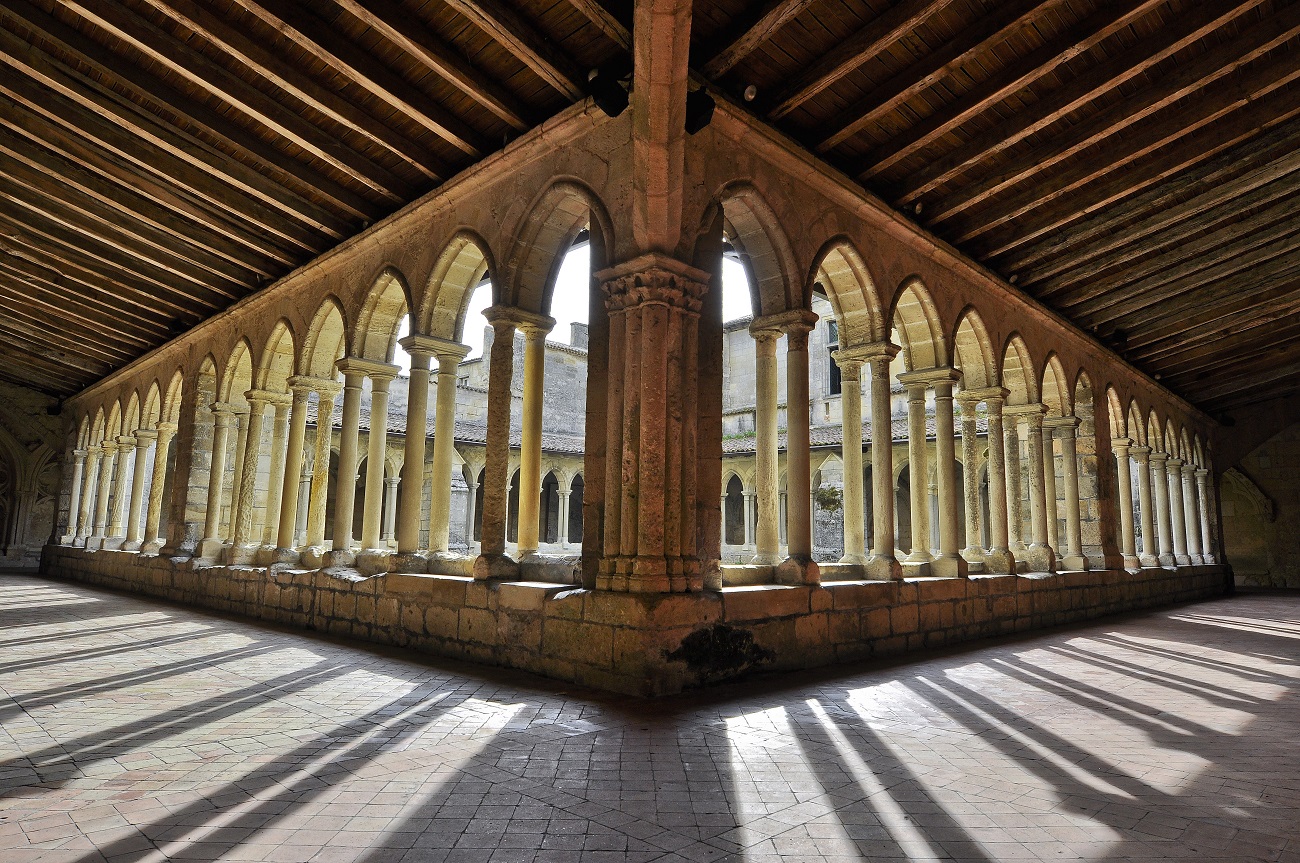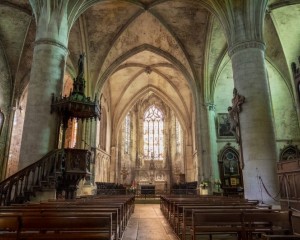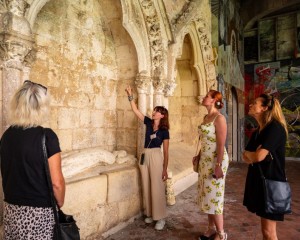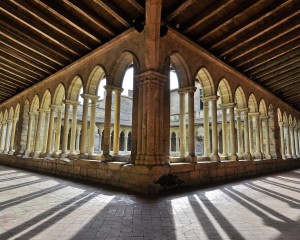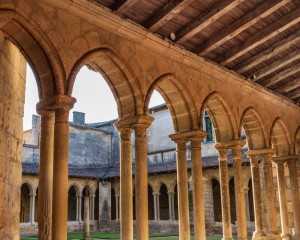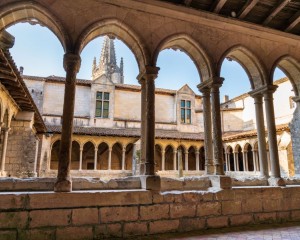Arriving in Saint-Emilion, the most impressive church that stands out from the upper town is the Collegiate church.
It’s not a fortunate coincidence. The religious community that lived in those walls between the 12th and the 18th century was a college of Canons following the rule of Saint Augustin and embodying the official religious institution. The etymology of the word canon helps us to understand their mission: it comes from the Ancient Greek “Kanôn” what means “the rule”. Bordeaux’s Archbishop Delegates, they were making sure of the good functioning of Saint-Emilion’s religious life. So the scale of this monument shows the importance of this community and its intention to mark his ascendancy.
The construction started in 1110 at the request of the Archbishop Arnaud Géraud de Cabanac. The transept and the core of the Collegiate church were transformed between the 13th and 15th centuries, letting the gothic style influencing the architecture of the church.
The Collegiate is not just a place of worship but also a real place of life for the community. In the garden of the cloister we can see all the faces of the monastery. From here, the Canons could go in all the other buildings of the convent. The three circular arches on the East wall are marking the former entrance of the Chapter room no longer existing nowadays. The current Tourist Office is located in the former refectory of the community.
Thus the cloister is geographic and spiritual hub for the monastery. It is a closed place for prayer, where the only real exit is the one towards the sky, the central garden being a symbol of the garden of Eden. Notice on South and East walls, the graves richly decorated dating 13th and 14th centuries.
Members of nobility and religious order were buried there. The Canons of Saint-Emilion, so powerful on the religious plan, also had a role to play on the political level. They taxed the population and offered to the local elite a grave of choice, in the heart of their monastery.
As classic as the monastery looks from the outside, it housed a very particular religious community, until the French revolution. Today the Collegiate church is the parish church of the village.
The rich heritage of Saint-Emilion is told, in English, during the guided tour "Saint-Emilion, Unesco City Tour".
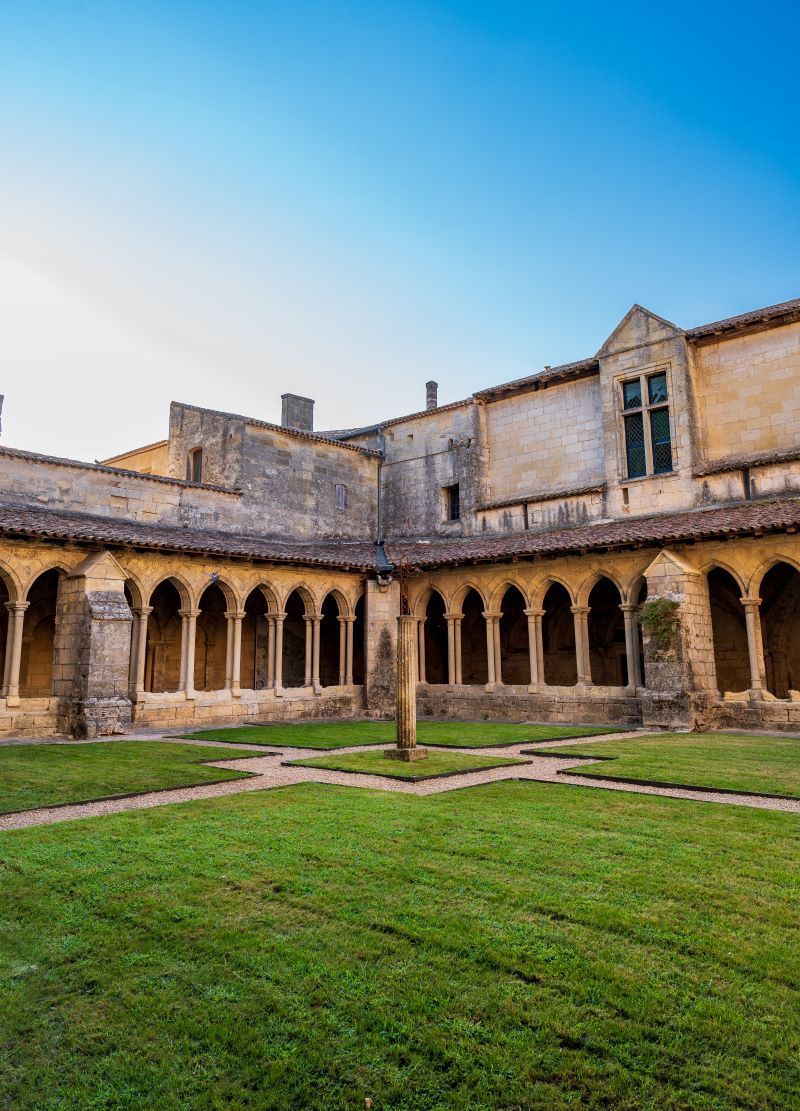
The Apocalypse, installed in the cloister of the Collegiate Church of Saint-Emilion, is a work of art created by the painter François Peltier, commissioned by the Parish of Saint-Emilion, the Friends of the Collegiate Church and the vicar, Father Rozières.
This work of art is 38.5 metres long and 5 metres high. This set of paintings was conceived as a whole and not as a succession of paintings. The Apocalypse is painted on different woods according to reflective symbols. There are five different woods: lebanese cedar, oak, chestnut, lime and poplar. The technique used is glazed oil painting.
"Apocalypse" comes from the Greek word "revelation", expressing a message of hope opposed to the common understanding of the word that often evokes the end of the world and cataclysms. The Book of Revelation is the last book of the Bible, its conclusion. It reveals the struggle of Good and Evil that ends with the triumph of Good, revealed by Saint John's visions.
The work of art of the Apocalypse of Saint-Emilion according to Saint John is therefore an attempt to make understandable at the same time the painful harshness of the struggle between Good and Evil and the joyful light of the promise of God's victory.
You can book a conference visit with the artist or a theatrical tour by clicking here (in french).
For more information and reservations, please contact the parish at visite@apocalypse-saint-emilion.com or +33 (0)5 57 24 70 81.
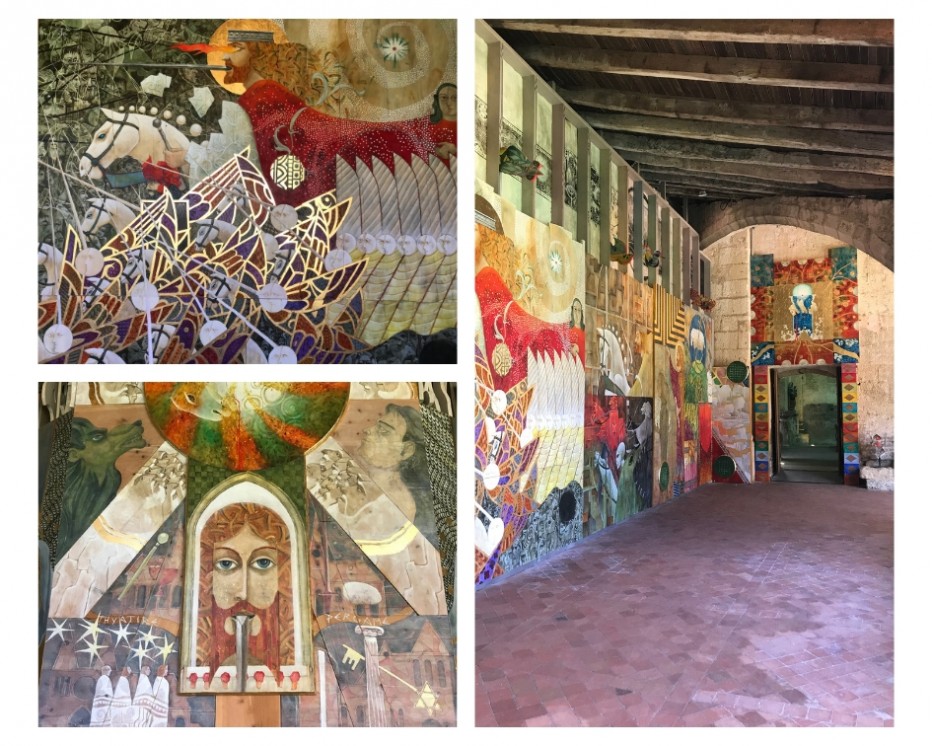
Grand Saint-Emilionnais Tourist Office
Le Doyenné - Place des Créneaux
33330 SAINT-EMILION
